Goedewaagen - Distel:
tea service 'Lotus'
Bert Nienhuis (attributed)
early Twenties
photo: K.M.G.
Willem van Norden
When De Distel was acquired, one of their staff joined Goedewaagen too: painter and designer Willem van Norden (Amsterdam 1883 - Laren 1978). He had been the manufacturer’s design manager in Amsterdam and was put in charge of all Distel design in Gouda. He also assumed repsonsibility for Goedewaagen’s painting workshop. And Van Norden made designs for Goedewaagen too. An exceptional tea service made by him is called ‘Norden’, striking as much for its slightly flattened spheres and its ‘plumed’ lids as its robust size.



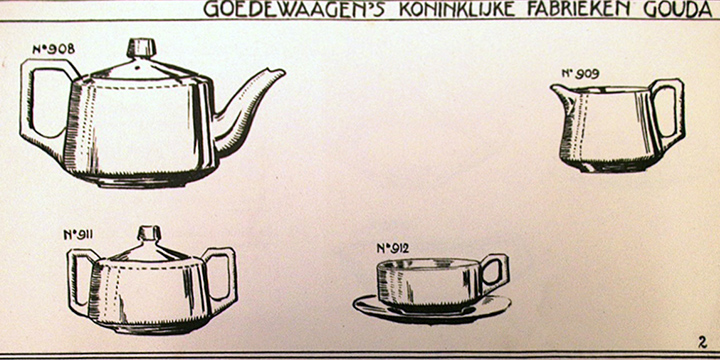
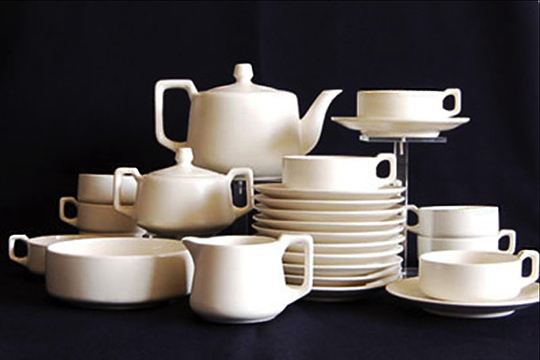
In the early Twenties Van Breukelen designed his first Goedewaagen tea service, simply called 700 by its number. The new model was such a success and for such a long time, that the company kept it in production for almost 60 years, with only small modifications. The red edition above is from about 1930 (collection Ellen Westenberg; photo: K.M.G.)
Van Breukelen’s 912 tea service, made in 1929 or thereabouts, was a great success too. It fit in well with the De Stijl movement and would not look out of place in one of Gerrit Rietveld’s idiosyncratic houses. The tea pot is very modern still, with its slightly tapered sides, angular handle and the knob on top of the lid repeating the form of the pot. (collection Joan Seyferth, photo courtesy Botterweg)
tea service '912' in 1932 catalogue of Goedewaagen,
Archive S.A.H.M Gouda.
courtesy: K.M.G.

Jan van Breukelen
Its lucrative pipe sales enabled Goedewaagen to hire good designers. And its managers chose well. Repeatedly designers were hired who made exceptional delftwares for daily use.
The first was Jan van Breukelen, who in 1918 transferred from the workshops of Plateelbakkerij Zuid-Holland. Van Breukelen was a trained designer and model maker. In his more than forty years with Goedewaagen he created hundreds of designs, determining to a large extent the look of the company’s commodity earthenwares.
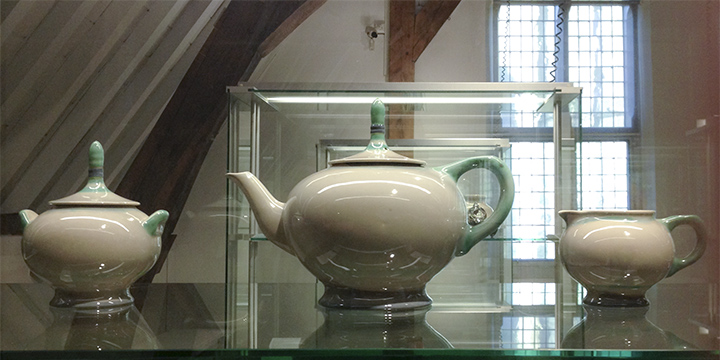
Goedewaagen:
'Norden'
Willem van Norden
app. 1925
col. Museum Gouda
De Distel
In 1923 Goedewaagen bought delftware manufacturer Plateelfabriek De Distel in Amsterdam. Apart from luxury and commodity earthenwares De Distel had made a name for itself in tile tableaux. Its many trade contacts plus its glazing recipes and models made it a very attractive acquisition for Goedewaagen. Lotus is a china set made at De Distel around the time of its acquisition by Goedewaagen. The graceful play of its forms and decoration represent a stylized lotus, the flower that in Buddhism symbolizes purity: just as lotuses grow from the silt towards the light, so man may grow towards spiritual enlightenment.
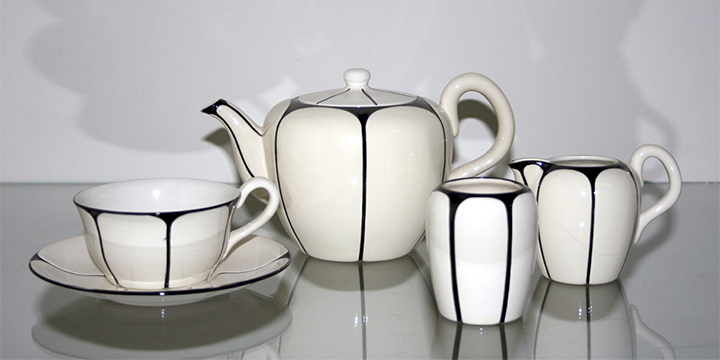
designed by Roy Greve for Royal Goedewaagen
in a special edition for pipe factory Elbert Gubbels.
photo: Friggo Visser; courtesy Keramisch Museum Goedewaagen

Royal Goedewaagen
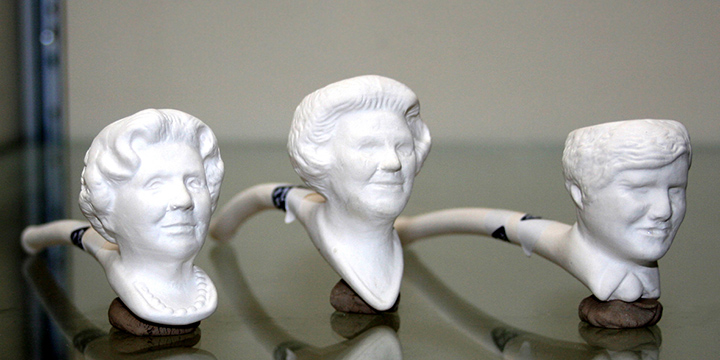
Gouda Pipes
Right after the first World War the earthenware industry in the Netherlands experienced difficult times. The Goedewaagen company was doing relatively well because of the continuing demand for gouda pipes. But the market for simple commodity earthenwares was declining, forcing them to formulate a new business strategy. Plateelbakkerij Zuid-Holland, one of their competitors, also managed to stay afloat, manufacturing luxury and commodity delftware. Goedewaagen decided it would like a piece of their pie. Actually, this wasn’t such a big step. Long years of experience making clay pipes had provided them with the know-how needed for earthenware casting. Fine delftware soon became this manufacturer’s mainstay.
Goedewaagen
after the First Worldwar
